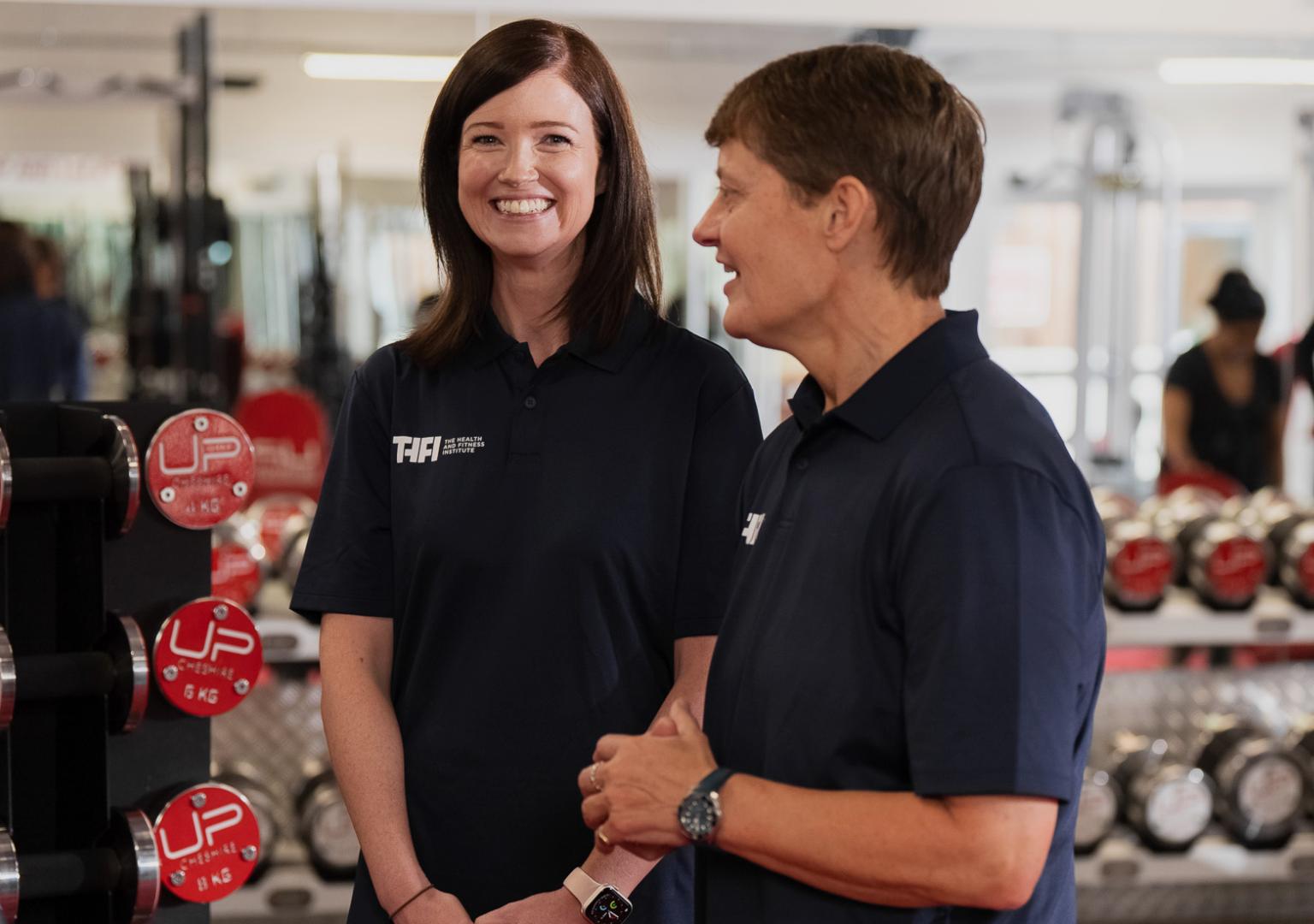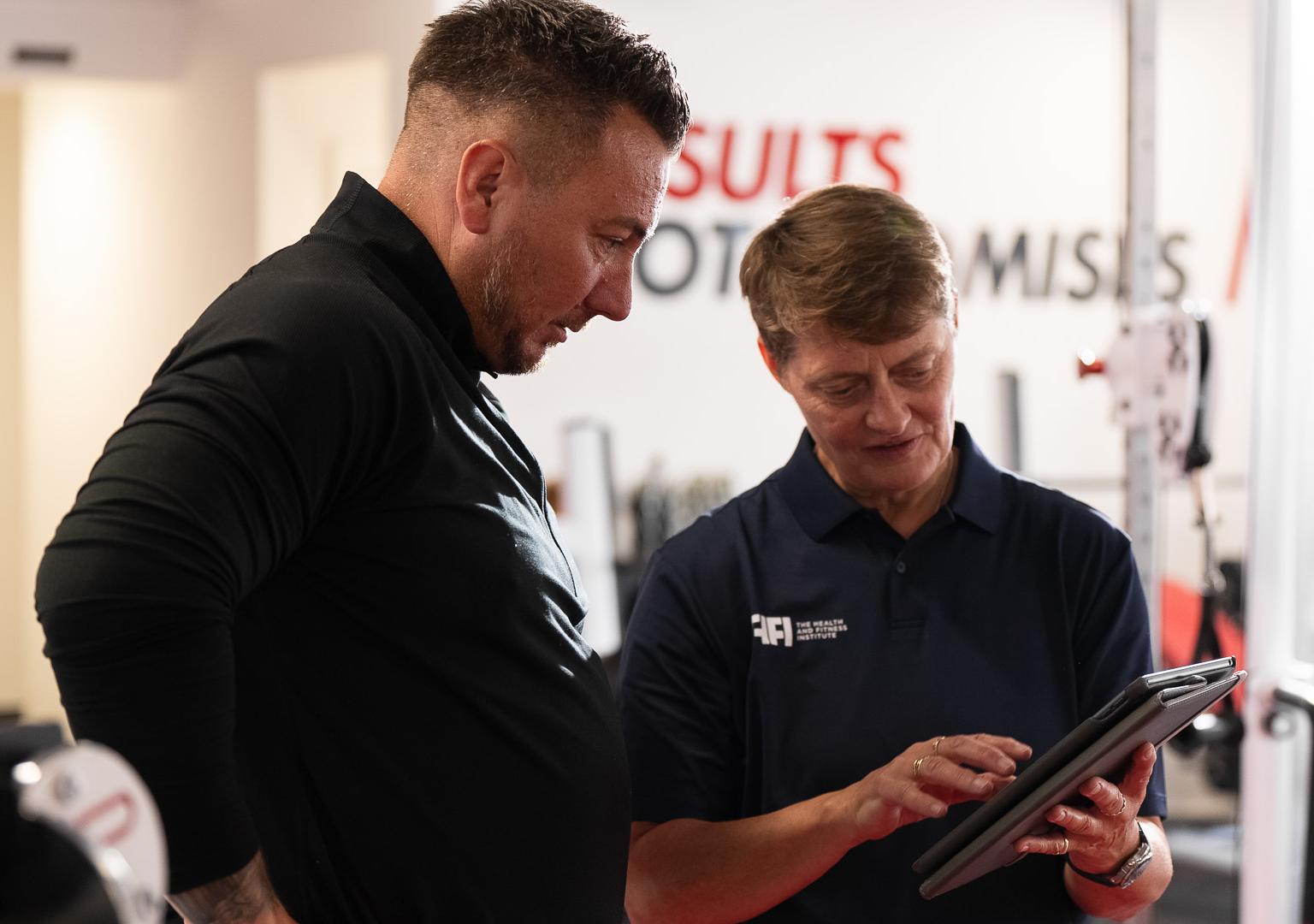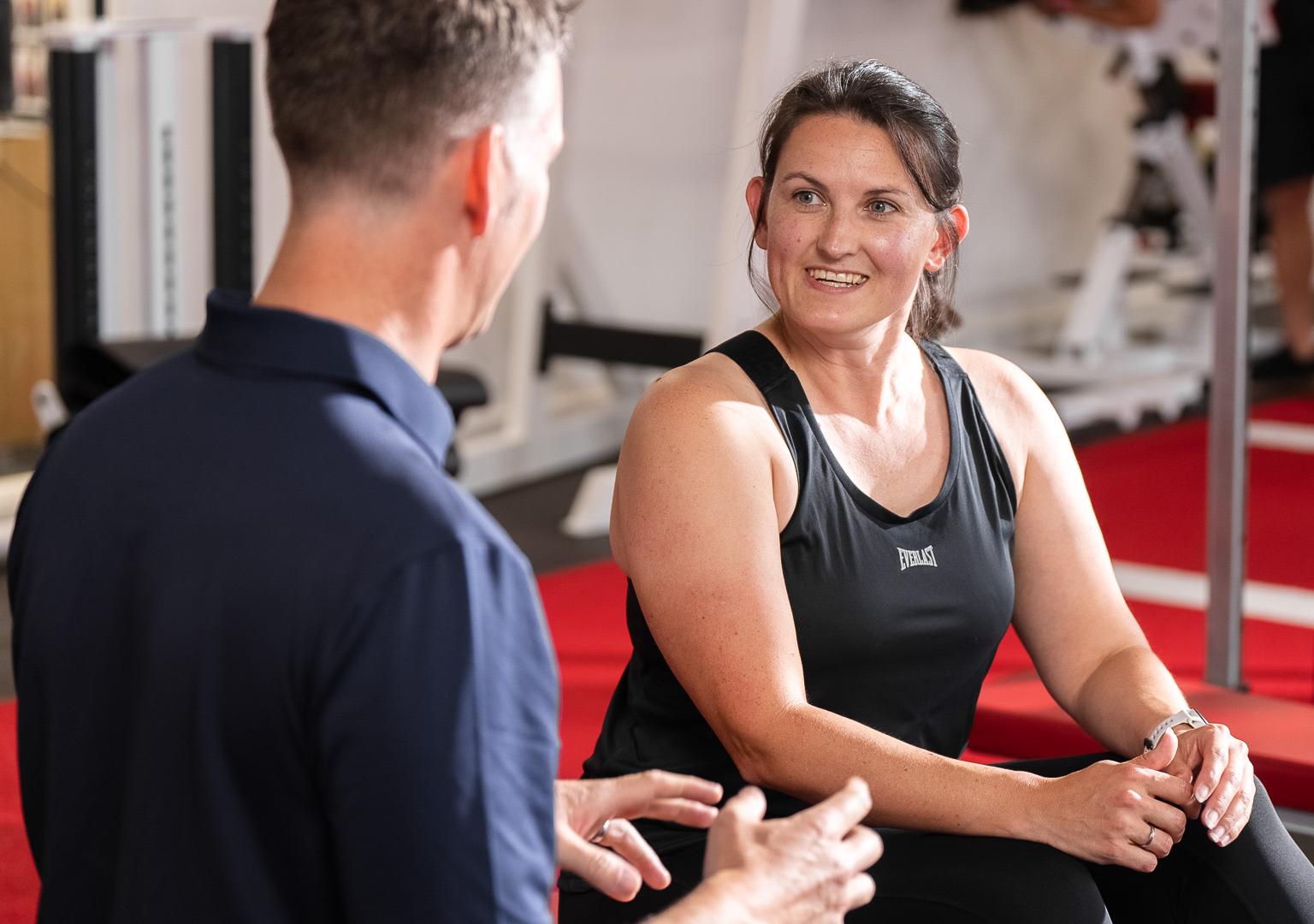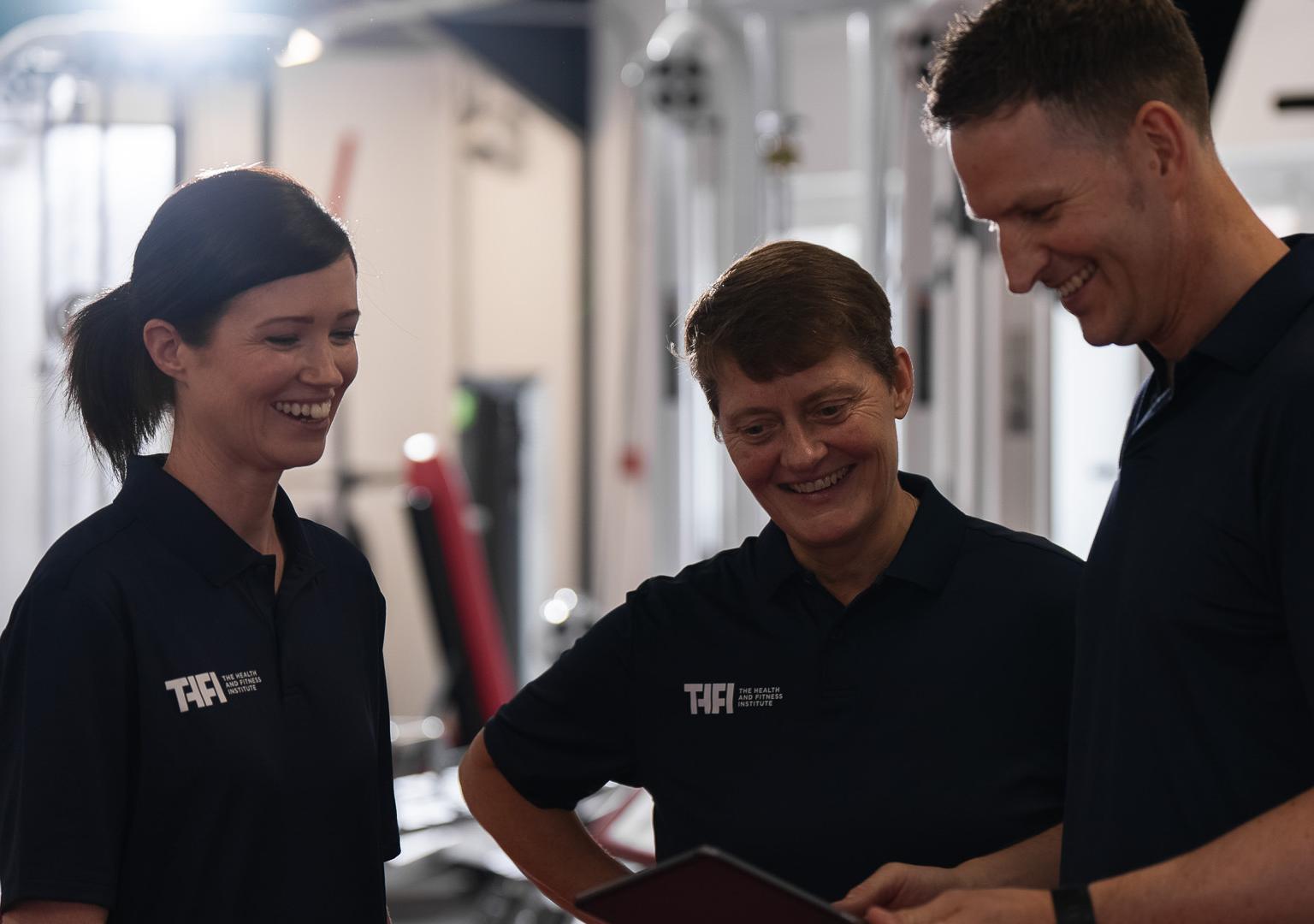Power Training for Everyday Personal Training Clients

Think power training is just for professional athletes? Think again.
This type of training isn’t just great for helping boxers punch more explosively or 100m sprinters fire out of the blocks faster.
It can be a game-changer for all kinds of personal training clients you work with...
Whether that’s mums who want to keep up with their kids, or busy professionals who want to feel more dynamic on the squash court.
Because every activity you perform – whether in sport or in everyday life – requires you to generate force quickly...and power training can help.
If you want to help your clients perform better and achieve life-changing results, you need to learn the basics of power training.
But what are the best power-based exercises? How do you work them into a well-rounded program?
And what are the best ways to introduce power training moves – whether that’s box jumps, kettlebell swings or Olympic lifting – working with beginners right up to athlete-level clients?
It’s all in this guide to power training...
What is Power Training?
Power training is more than lifting weights quickly. It's a sophisticated blend of strength and speed that results in explosive power. This type of training primarily targets the type II muscle fibres, which are crucial for rapid, high-intensity movements. In power training, the focus is on performing exercises with a level of force and velocity that challenges these fibers to adapt and grow stronger.
But why does this matter to you, as a personal trainer? Because in an industry where clients are constantly chasing efficiency in their workouts, power training offers an answer. It's not just for athletes; it's for everyone who wants to enhance their physical capabilities, whether it's lifting their child without strain or sprinting to catch a bus. As a trainer, your ability to integrate power training into your clients' routines can transform their perception of fitness and their results.
The Science Behind Power Training
The beauty of power training lies in its foundation in science. When a client performs a power movement, like a jump squat or a kettlebell swing, they're not just working their muscles; they're also training their nervous system. This training teaches the body to recruit muscle fibres more efficiently and quickly. It's about neuromuscular adaptation as much as muscular development.
Let's break it down: when someone performs a power exercise, they are essentially going through two phases. The first is the loading phase, where the muscles lengthen and store potential energy (think of pulling a slingshot back). The second phase is the explosive phase, where this stored energy is released rapidly (releasing the slingshot). This process not only improves muscle power but also enhances coordination and agility.
As a trainer, understanding this science isn't just academic; it's practical. It allows you to tailor your clients' workouts to their needs and goals. Whether it's a young athlete looking to improve their vertical jump or a middle-aged client wanting to regain some youthful vitality, power training can be the key to unlocking their potential.
What are the Everyday Benefits of Power Training?
Imagine your client, who’s a parent, effortlessly lifting their child, or another, who’s a busy professional, sprinting to catch a train without a second thought.
These scenarios aren’t just about strength; they’re about the power to perform everyday activities with ease and confidence. This is where power training shines.
The benefits are numerous and tangible:
- Improved Functional Strength: Power training enhances the ability to perform day-to-day tasks with greater ease. This type of training develops muscle groups in a way that mimics real-world activities.
- Enhanced Metabolic Rate: These exercises elevate the metabolism not just during the workout but for hours afterwards. This helps your clients maintain a healthy body weight more easily.
- Better Posture and Balance: The explosive movements in power training strengthen the core and improve balance, which is essential as we age.
- Increased Bone Density: Especially crucial for older clients, power training helps in maintaining bone health, reducing the risk of osteoporosis.
How does Power Training Improve Long-term Health?
Incorporating power training into your clients' routines isn’t just about immediate results; it’s an investment in their long-term health. Research has shown that this type of training can have profound effects on health markers, such as cardiovascular health, joint stability, and mental well-being.
- Heart Health: Power training, with its high-intensity bursts, is excellent for heart health. It keeps the cardiovascular system efficient and robust, reducing the risk of heart-related diseases over the long term.
- Joint Health and Mobility: Regular power training strengthens not just muscles but also the tendons and ligaments around joints, leading to improved joint stability and mobility.
- Cognitive Function: Exercise, in general, has been linked to improved brain health, but the fast-paced nature of power training also helps in keeping cognitive function sharp.
- Emotional Well-being: Exercise is a proven mood booster and can help reduce stress too. Power workouts can be one effective way of enjoying these benefits.
How to use Power Training in Your Personal Training Sessions
Introducing power training into your clients' workout programs can be a game-changer. However, as with any training methodology, it's essential to do it the right way. This means assessing client readiness, identifying key exercises, and ensuring safety...
Assessing Client Readiness
Before launching into power training, it's crucial to evaluate whether your client is ready. This assessment isn't just about their physical capability; it's also about their mental preparedness and understanding of the training.
- Physical Assessment: Look for baseline strength levels, mobility, and overall fitness. Power training is demanding, and your client needs a solid foundation to build upon.
- Mental Readiness: Power training can be intense. Ensure your client understands what is involved and is mentally prepared to take on the challenge.
- Goal Alignment: Make sure power training aligns with your client’s fitness goals. Whether it's improving sports performance or everyday functional strength, the training should be relevant and beneficial.
Essential Power Training Exercises
Once you've determined a client is ready, it's time to introduce power exercises. These should be tailored to individual needs and abilities, but some foundational movements are beneficial for most clients:
- Box Jumps: Great for lower body power, improving explosiveness, and cardiovascular health.
- Kettlebell Swings: These target the posterior chain muscles, vital for explosive strength.
- Medicine Ball Slams: Excellent for building upper body power.
- Plyometric Push-Ups: These enhance upper body explosiveness and are a fun challenge to include.
- Squat Jumps: Ideal for developing leg strength and overall power.
Remember, the key is to start with the basics and gradually increase complexity and intensity.
Safety Considerations
Safety is paramount. Power training, by its nature, carries a higher risk of injury if not done correctly.
- Proper Warm-Up: Ensure your client is thoroughly warmed up before starting power exercises. This preparation should include dynamic stretches and light cardiovascular activities.
- Form and Technique: Monitor and correct form constantly. Poor technique can lead to injuries, especially when dealing with explosive movements.
- Progress Gradually: Start with lower intensity and simpler movements, gradually increasing as your client becomes more comfortable and skilled.
- Recovery Time: Power training is taxing on the body. Adequate recovery time between sessions is crucial to prevent overtraining and injuries.
How to Advance Your Power Training Techniques
Once you know the basics about power training, you can start introducing more advanced strategies and progressions with your clients...
Power Training Progression Strategies
Progression in power training isn't just about increasing weights or reps. It's a nuanced approach that requires a deep understanding of your client's abilities and goals.
- Incremental Intensity: Start with lower-intensity power exercises and gradually increase the intensity. This could mean progressing from bodyweight jump squats to weighted vest jump squats.
- Complexity and Variety: Introduce more complex movements as your clients become more proficient. For example, evolve from basic box jumps to lateral box jumps or box jumps with a twist.
- Periodisation: Implement periodisation in your training plans. This means structuring the training program into phases, each with a specific focus, such as building base strength, then moving into more intense power phases.
- Benchmarking Progress: Regularly assess and benchmark your clients' progress. This could be through tests like vertical jumps or sprint times, depending on their goals.
How to Combine Power with Other Training Modalities
Power training should be one component of a comprehensive fitness program. Combining it with other training modalities not only enhances your client’s overall fitness but also prevents them from getting bored of training.
- Strength and Power: Integrate power training with traditional strength training. For instance, after a heavy lifting session focusing on strength, include a few power exercises to train the muscles in a different way.
- Endurance and Power: Combine power training with endurance exercises. This could be a circuit that includes power moves like medicine ball throws, followed by a stint on the rowing machine.
- Flexibility and Mobility Work: Incorporate flexibility and mobility exercises into power training sessions. This combination ensures that clients maintain a full range of motion and reduce the risk of injury.
- Mind-Body Modalities: Don’t forget the importance of mind-body practices like yoga or Pilates. These can complement power training by enhancing body awareness, balance, and core strength.
How to use Power Training with Different Kinds of Client
One of the hallmarks of a skilled personal trainer is the ability to adapt training to suit a wide array of clients. Power training is not a one-size-fits-all approach; it requires thoughtful modifications to cater to different fitness levels, abilities, and goals. Let's delve into how you can tailor power training exercises for a diverse clientele.
Adapting Exercises for Different Fitness Levels
Your client base will range from beginners to advanced athletes, and each will require a unique approach to power training. Here are some strategies to adapt exercises:
- For Beginners: Start with the basics. Focus on bodyweight exercises that teach the principles of power training without overwhelming the client. Exercises like squat jumps, modified push-ups with a clap, or light medicine ball throws can be great starters. Emphasize form and technique over intensity.
- For Intermediate Clients: Once the basics are mastered, introduce more challenging movements and light weights. This might include kettlebell swings, box jumps with varying heights, or plyometric lunges. It's important to incrementally increase the difficulty to continually challenge the client.
- For Advanced Clients: Here, you can incorporate complex movements that require a high level of coordination and strength. Exercises like Olympic lifts (if you’re certified to teach them), advanced plyometric drills, or heavy medicine ball slams can be effective. For these clients, focus on refining technique and increasing power output.
- Modifications for Specific Needs: Always be ready to modify exercises based on individual needs. For example, if a client has knee issues, replace high-impact jumps with low-impact alternatives like step-ups with a knee drive.
- Client’s Lifestyle Considerations: Adapt the exercises to suit the client’s daily activities or sports. For instance, if you're training a tennis player, incorporate lateral and rotational power movements that mimic the demands of their sport.
- Age-Appropriate Training: For older adults, focus on low-impact power exercises that help improve their functional strength and balance. This can include exercises like chair squats or light resistance band exercises that mimic power movements.
Remember, the key to successfully training diverse clients is not just about modifying exercises; it’s about understanding their unique goals, limitations, and motivations. As a personal trainer, your ability to tailor power training in a way that resonates with each individual client will not only yield better results but also build stronger client-trainer relationships.








